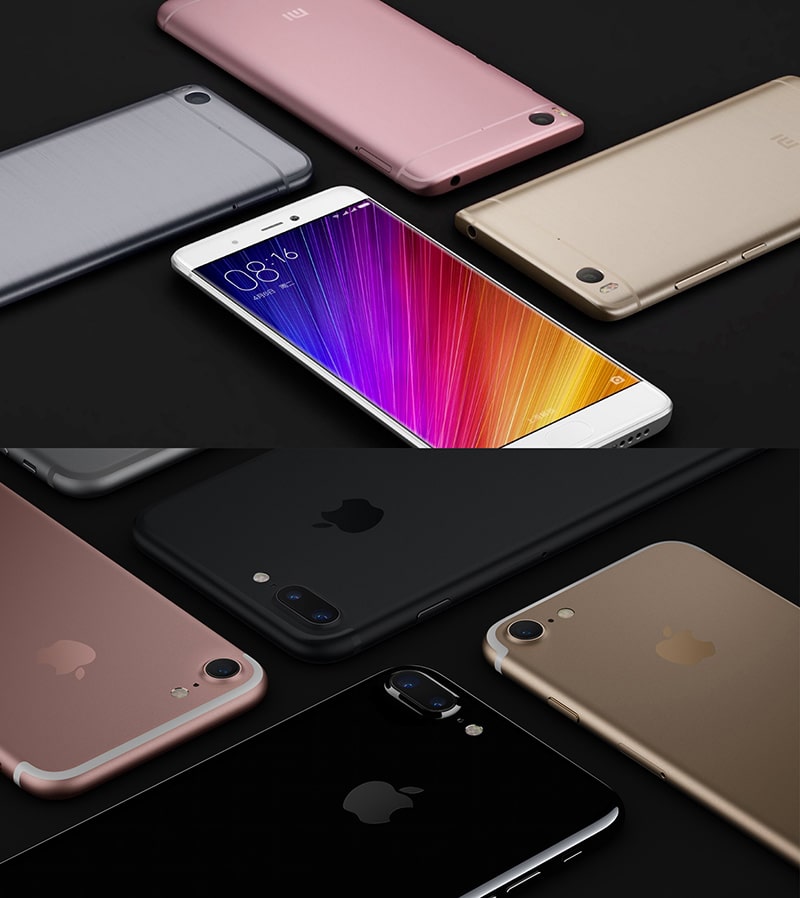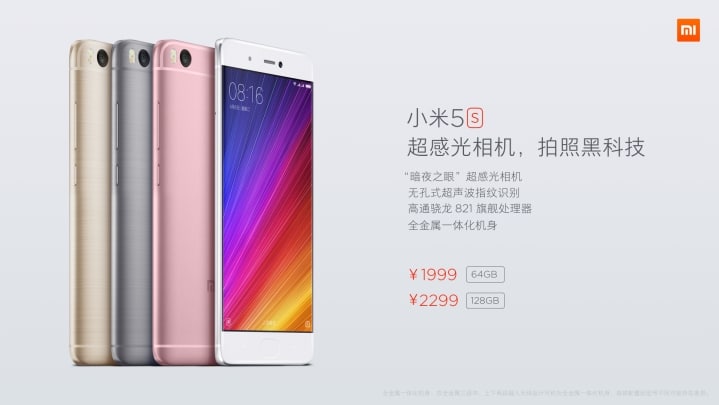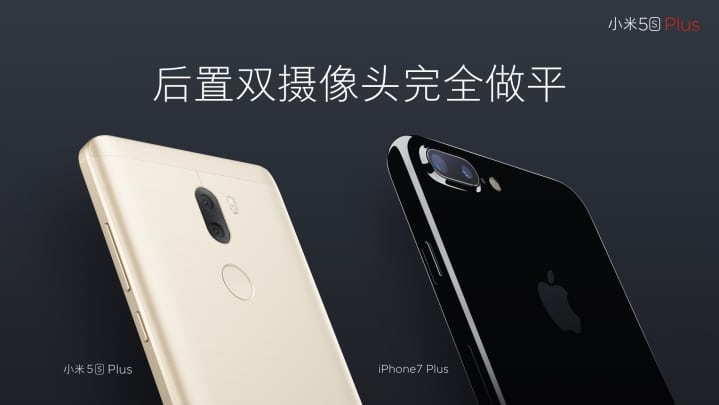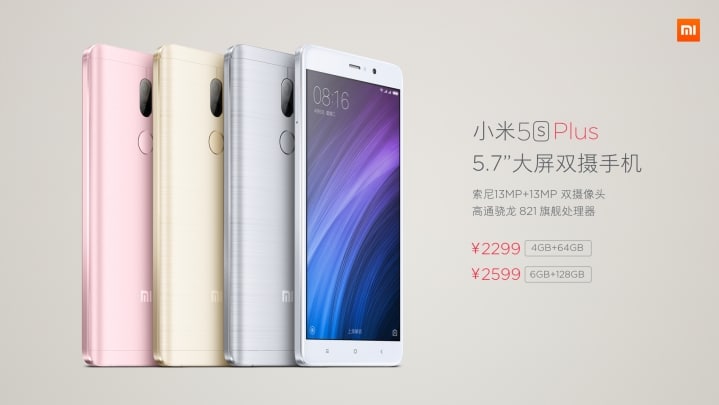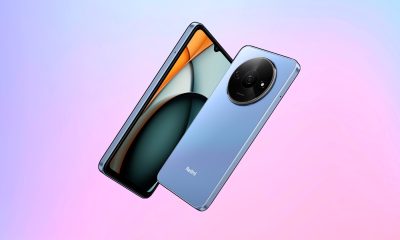News
Xiaomi Mi 5s and 5s Plus set to challenge iPhone 7 and 7 Plus

Another Xiaomi launch, another pair of Apple clones. This isn’t to say the Chinese brand’s newest flagships aren’t any good; in fact, the Xiaomi Mi 5s and 5s Plus are up there with the very best, and they don’t cost a fortune.
Despite having a little “s” attached to their names, the pair of smartphones are significant upgrades over the original Mi 5 launched last February. Back then, we compared Xiaomi’s flagship at that time to the Samsung Galaxy S7. Now, the similarities are closer to the iPhone 7 and 7 Plus. Even the promotional image below screams copycat.
The signs are all there: a completely metal unibody construction for both the 5.15-inch Mi 5s and 5.7-inch Mi 5s Plus, the usual iPhone-like MIUI Android interface, and some features taken straight out of Apple’s playbook. Let’s look into them now.
The highest-end Mi 5s, which is the 4GB RAM with 128GB internal storage configuration, has a pressure-sensitive display, similar to what Apple applied on its last two iPhone generations. It’s definitely a bonus if you want expanded interactivity with your apps’ options, but if it goes down the same path as the iPhones, then third-party support might be limited for a while. Huawei did it first on Android with its Mate S handset last year, yet there has barely been any backing from software developers since then.
What’s unique to the Mi 5s — and this isn’t even available on the larger Mi 5s Plus — is the ultrasonic fingerprint scanner powered by Qualcomm’s Sense ID. It may sound needless with regular sensors already being blazing fast, but this type is a lot more secure thanks to its added accuracy, plus it can work through wet hands and may be placed under the handset’s glass panel. We had a chance to try it ourselves and we must say, it really is the best fingerprint-scanning technology out there, and we’re glad Xiaomi finally managed to incorporate it.
The specs are expected of a newly launched flagship: We have Qualcomm’s best processor in the Snapdragon 821, a 12-megapixel shooter at the back with a 4-megapixel one up front, and an acceptable 3200mAh battery capacity.
The 4GB memory with 128GB storage model we mentioned earlier will retail at RMB 2299 (almost $345), and the 3GB memory with 64GB storage version will go for RMB 1999 (slightly above $299). Colors offered are silver, gray, gold, and rose gold, with availability beginning on September 29 in China.
Surprisingly, the Mi 5s Plus doesn’t just lack the high-tech fingerprint scanner of its smaller sibling (although, there’s a regular one at the back), it also doesn’t offer a pressure-sensitive display. Instead, the 5.7-inch phablet opts for a 13-megapixel dual-camera setup, very similar to Huawei’s implementation on the P9; one image sensor captures in monochrome, while the other in full color. Image detail will be a lot sharper thanks to the combined effort of two lenses, which is far better than Xiaomi’s previous attempt.
Other advantages of the Mi 5s Plus are the larger 3800mAh battery, bigger display (it maxes out at 1920 x 1080 pixels like the more compact Mi 5s, though), and the choice of having 6GB of RAM. The processor is the same as the chip found in the Mi 5s, and both phones have Quick Charge 3.0-enabled USB Type-C ports. As you can tell, the Plus variant may not be as innovative as the Mi 5s, but it definitely has more multimedia muscle in its circuits.
Its cheapest configuration, which has 4GB of RAM and 64GB of storage, costs as much as the top-end Mi 5s at RMB 2299 ($345). The model with 6GB of RAM and 128GB of storage isn’t much of a jump in price, and seems like a more worthwhile purchase; you can buy one for only RMB 2599 ($390). Colors options and availability are the same as that of the Mi 5s.
[irp posts=”12207″ name=”One month with Xiaomi’s Yuemi mechanical keyboard”]
Source: Xiaomi

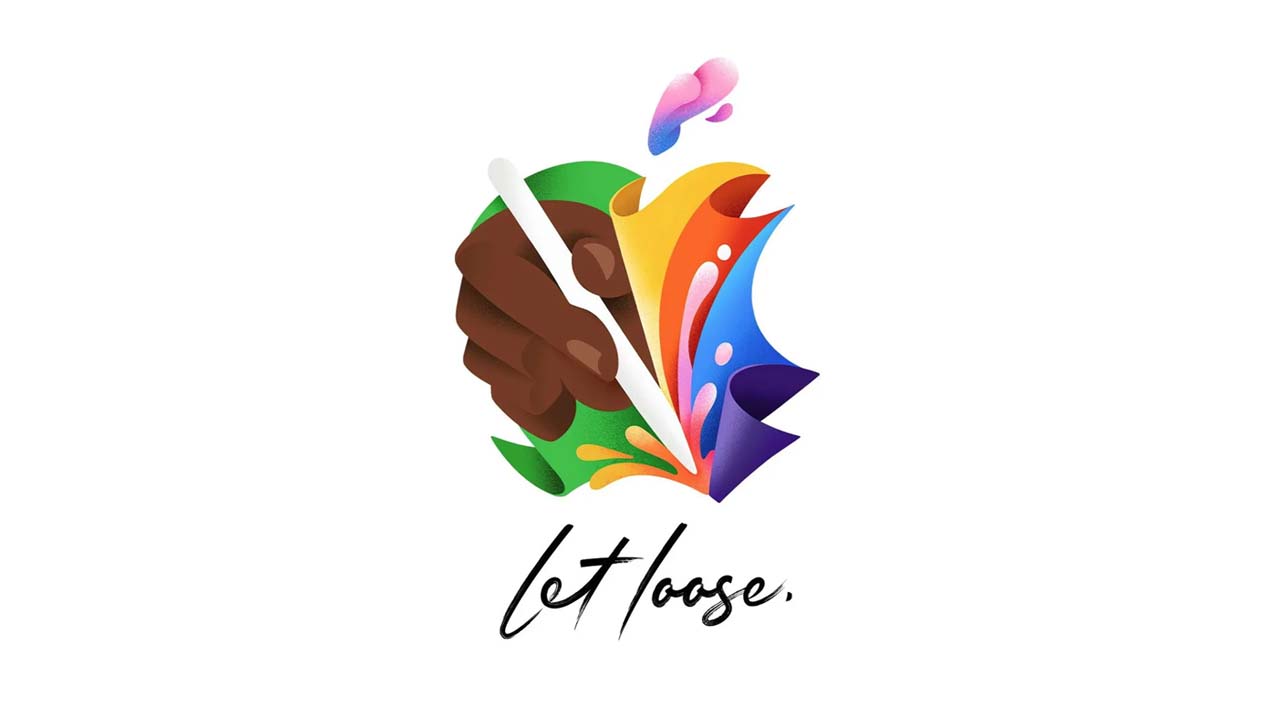
The next Apple event is coming! Two weeks ahead of the big launch, the iPad maker has announced an upcoming event dedicated to the tablet.
As always, Apple has added a tagline to tease what’s coming for the brand. This time, it’s “Let loose.”
Now, you won’t get a lot of clues from something so vague. Thankfully, the graphic is much more telling. It features a hand clearly grasping an Apple Pencil. For sure, the event will focus on new iPads.
The special event will start on May 7, 10AM ET. Interested viewers can watch the event live.
There’s no confirmation what models are getting new faces for the event. However, rumors are swirling that we’re getting a new iPad Pro. We can likely expect a new Apple Pencil too, especially since the stylus is a main focus for the invite.
New iPhones are likely out, though. Apple usually holds the event for those later in the year. That leaves the Macs and the Vision Pro in the less-likely-but-still-possible realm.
That said, if you’re looking for new tablets, it’s time to wait a bit.
News
MediaTek eyes video generative AI for mobile, next-gen sat broadband, more
MediaTek sets its eyes on the future
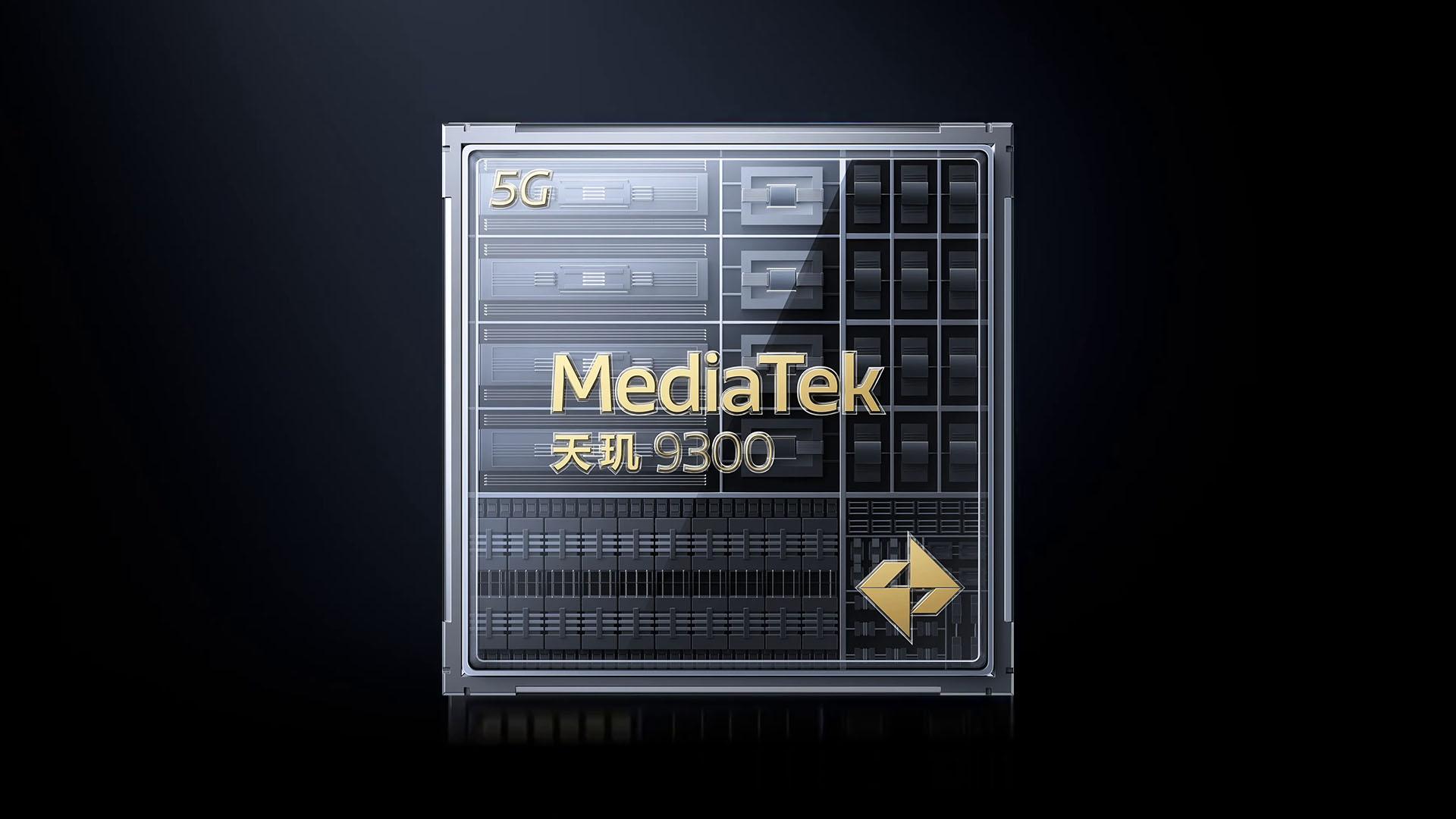
Without question, AI-powered features have been integral for smartphones nowadays. And although it’s still “limited” what users can do with AI on their phones, MediaTek is trying to bring more advanced capabilities to mobile devices. This, as the semiconductor company is eyeing video generative AI for mobile, as part of its goals for the near future.
A few months ago at MWC 2024, MediaTek showcased on-device generative AI video diffusion powered entirely by its Dimensity 9300 processor. This leading smartphone chip incorporates the world’s first hardware-based generative AI Engine with secure, personalized AI. It is capable of bandwidth reduction, LoRA Fusion, and 8X faster generative AI performance, compared to MediaTek’s preceding AI processor.
Sooner rather than later, users can perhaps elevate the short video-editing experience on their smartphones by leveraging video generative AI, something reserved for heavyweight devices and software programs for now.
World’s first 5G-advanced satellite broadband
Aside from video generative AI on mobile devices, MediaTek is working on improving connectivity across various technologies. For instance, the company is working on a 5G-NR-NTN satellite chip that can deliver broadband speeds of up to 100mbps. They are working with Rohde & Schwarz for this innovation. One industry that will surely benefit from this is the automotive industry, with MediaTek utilizing advanced LEO satellite support over the Ku-band.
New platforms for 5G IoT, wearables
Meanwhile, the newly-announced MediaTek T300 platform will make it easy for IoT designers to transition to 5G-NR especially for applications requiring ultra-efficient connectivity and long-lasting battery life. This includes wearables, lightweight AR devices, and always-connected IoT devices. MediaTek likewise demonstrated at MWC 2024 how it can achieve consistent low latency for AR and IoT devices. This was made possible by the company’s new RedCap RFSoC using the Keysight UXM5G Wireless Test Platform.
5G CPE for better performance
Moreover, MediaTek showcased its latest 5G CPE devices powered by the T830 platform. Using three transmission antennae (3TX) applicable across 5G NR band combinations, MediaTek eyes performance enhancements for Wi-Fi routers, promising low latency, low loss, and a significant reduction in network delay.
Auto industry collaborations
Earlier in the year, MediaTek also released AI-driven chipsets specifically for smart cars. This is another aspect the company wants to build on. Using OpenSynergy Hypervisor technology, MediaTek wants advanced safety-first features through a virtualized OS within the vehicle. Additionally, MediaTek and ACCESS Twine4Car are working together to develop richer multiscreen entertainment and interactive services. Of course, the former already has the Dimensity Auto smart cockpit and infotainment platforms working to provide highly capable processing.
These platforms can handle demanding processes. These include multiple operating systems, wireless connectivity feeds, and multiple concurrent video playbacks. It can even support advanced 3D graphics and generative AI for the driver and passengers in the vehicle, elevating the overall smart car experience.
Smart home IoT connectivity
Lastly, MediaTek is envisioning a “home gateway” concept which it calls “Ambient Computing.” This will allow users to manage their network of IoT devices in a better, faster, and more direct manner. This will be done by having the technology solve the indoor-outdoor network barrier through bypassing third-party networks.
In other words, users will be able to control everything from their mobile device, minus third-party services. And because multiple devices are working together, a user may technically use a PC to accelerate tasks on the smartphone — beyond what’s possible on a mobile chip. That extends the phone’s life considerably, too.
News
Xiaomi Redmi A3 Philippine pricing, availability
Budget smartphone with high refresh rate display
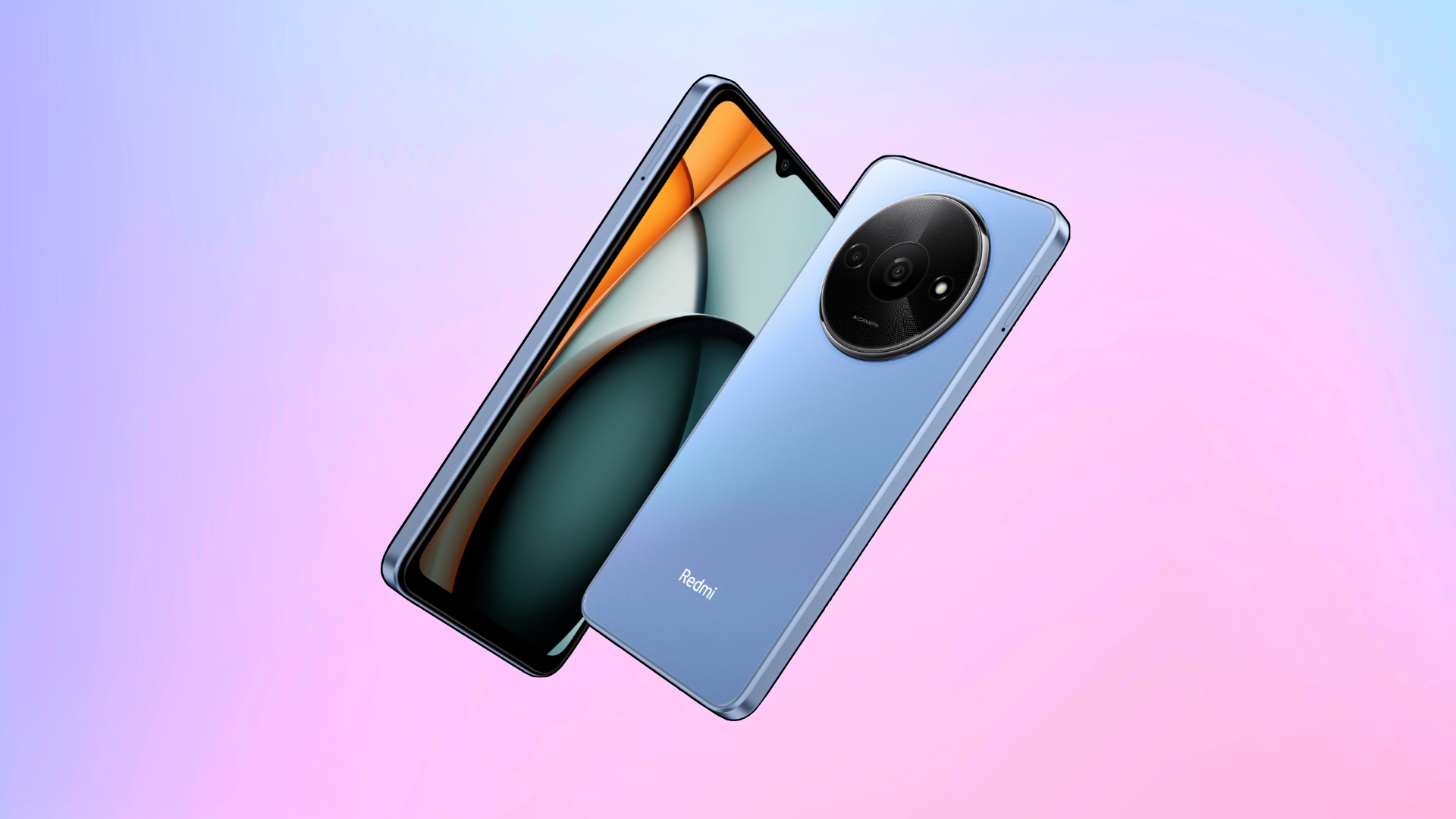
Xiaomi is bringing high refresh rate displays to its budget line with the announcement of the Redmi A3. The latest addition to the entry-level Redmi line boasts of an expansive 6.71-inch HD+ display with up to a 90Hz refresh rate.
The Redmi A3 is available in Midnight Black, Star Blue, and Forest Green. The smartphone is priced at PhP 3,399 (3GB+64GB) and PhP 3,999 (4GB+128GB) respectively for its two configurations.
Customers may preorder the phone until April 27 via Lazada, Shopee, and TikTok. General sale begins April 26th in all Xiaomi stores nationwide. Freebies are a Basic Piston Earphone for online purchases and a 3-month Viu Premium subscription for in-store purchases.
The Redmi A3’s immersive screen allows users to consume various content in high-definition with better smoothness, a boost for a phone of its price point. The screen has Corning Gorilla Glass 3 protection as well, and DC dimming to reduce blue light exposure.
The phone also sports a refined design that lets go of the iPhone-looking camera arrangement. Instead, the main camera is now in the middle as part of a watch face-looking setup similar to other Android phone offerings.
Speaking of, an 8MP main shooter highlights the back of the Redmi A3. In front is a 5MP front camera. The phone is powered by a MediaTek Helio G36 processor and runs on an Android 14-based OS. Furthermore, it has a 5,000mAh battery with 10W of USB-C charging.
Other handy Redmi A3 features for users to utilize include a 3.5mm jack, Face Unlock, and Fingerprint Unlock.
-

 Events2 weeks ago
Events2 weeks agoStellar Blade: PlayStation taps cosplayers to play Eve for game’s launch
-

 Features1 week ago
Features1 week agoFortify your home office or business setup with these devices
-

 Gaming2 weeks ago
Gaming2 weeks agoThe Rogue Prince of Persia looks like an ultra-colorful roguelite
-

 Accessories2 weeks ago
Accessories2 weeks agoLogitech unveils G Pro X 60 gaming keyboard: Price, details
-

 Reviews1 week ago
Reviews1 week agorealme 12+ 5G review: One month later
-

 Gaming2 weeks ago
Gaming2 weeks agoLenovo confirms development of a Legion Go 2
-

 Deals2 weeks ago
Deals2 weeks agoTCL P635 TV: Big savings for TCL’s anniversary
-

 Gaming1 week ago
Gaming1 week agoNew PUMA collection lets you wear PlayStation’s iconic symbols

